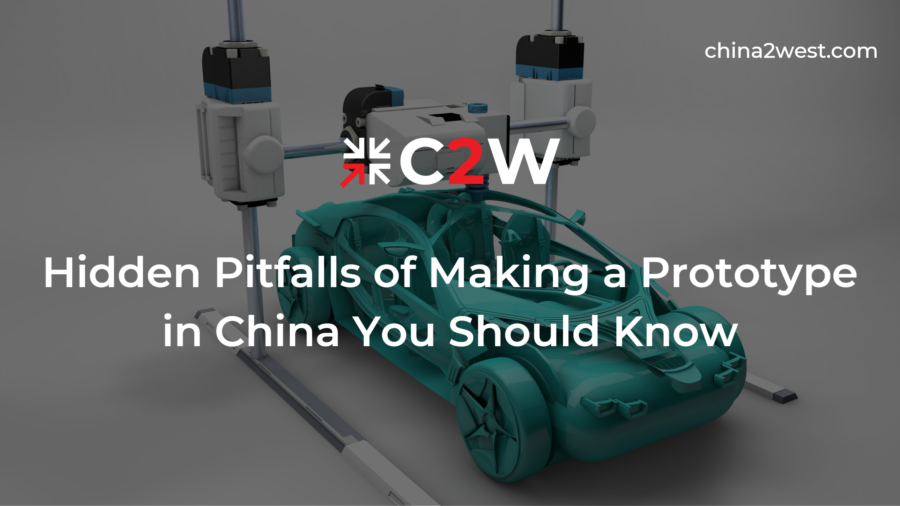In today’s globalized economy, China has emerged as a prominent destination for manufacturing and prototyping. Its reputation for cost-effectiveness, skilled labor, and manufacturing capabilities has made it an attractive choice for entrepreneurs and businesses looking to bring their product ideas to life.
However, despite its many advantages, there are hidden pitfalls that one should be aware of when making a prototype in China. This article will delve into these potential challenges, helping you navigate the process more effectively and avoid common pitfalls.
Language and Communication Barriers
One of the primary challenges of making a prototype in China is the language barrier.
While English is widely spoken in major cities and manufacturing hubs, there can still be significant communication gaps. Misinterpretations and misunderstandings may occur due to language differences, leading to errors or delays in the prototype development process.
To overcome this challenge, it is crucial to establish clear and concise communication channels with your Chinese manufacturing partner. Working with a reputable manufacturer with English-speaking employees can bridge the language gap and ensure that your requirements are accurately conveyed to the prototype manufacturer.
Intellectual Property Protection
Intellectual property (IP) protection is a concern that often arises when outsourcing prototype production to China. The country has a reputation for lax IP regulations and enforcement, making it essential to take necessary precautions to safeguard your designs, innovations, and trade secrets.
To protect your intellectual property, consider taking the following measures:
- Conduct thorough research on the reputation and track record of potential manufacturing partners in China.
- Clearly define and document your intellectual property rights before sharing any sensitive information or design files.
- Utilize non-disclosure agreements (NDAs) and confidentiality clauses to legally protect your IP.
- Consider filing for patents or other forms of IP protection in your home country, China, and relevant international jurisdictions. Working with an experienced manufacturer in China will provide you with much-needed peace in IP filings.
By being proactive in protecting your intellectual property, you can mitigate the risk of unauthorized use or replication of your prototype.
Quality Control and Standards
Maintaining consistent quality and adhering to international standards is crucial when producing a prototype. While China has made significant strides in improving manufacturing quality, there can still be variations in production standards and practices.
To ensure the desired quality of your prototype, consider the following steps:
- Conduct thorough due diligence on potential manufacturing partners, including visiting their facilities, inspecting their production processes, and reviewing their quality control measures.
- Clearly communicate your quality expectations and specifications to the manufacturer.
- Implement regular inspections and quality control checks during the prototype manufacturing process.
- Request samples and conduct rigorous testing to validate the quality and performance of the prototype before proceeding to mass production.
By prioritizing quality control and setting clear expectations, you can minimize the risk of receiving subpar prototypes that do not meet your requirements.
Logistics and Shipping Challenges
Another significant consideration when making a prototype in China is the logistics and shipping process. Distance, customs regulations, and transportation complexities can lead to delays, increased costs, and potential damage to your prototypes during transit.
To navigate these challenges effectively, consider the following:
- Work with a reliable shipping partner who has experience in transporting goods from China.
- Clearly communicate your packaging requirements to ensure the prototypes are adequately protected during shipping.
- Track the shipment and stay updated on its progress to anticipate any delays or issues.
- Purchase insurance for your prototypes to safeguard against potential damage or loss.
By carefully managing the logistics and shipping process, you can minimize disruptions and ensure that your prototypes arrive in a timely and intact manner.
Cultural Differences and Business Etiquette
China has a unique cultural landscape and business etiquette that may differ from what you are accustomed to in your home country. Failing to understand and adapt to these cultural nuances can lead to misunderstandings, strained relationships, and potential difficulties in navigating the prototype manufacturing process.
To navigate the cultural differences effectively, consider the following:
- Educate yourself about Chinese culture, traditions, and business practices.
- Show respect and humility when interacting with your Chinese manufacturing partners.
- Build strong personal relationships and establish trust through face-to-face meetings and regular communication.
- Be patient and flexible, as the Chinese business culture may differ in terms of decision-making processes and timelines.
By embracing cultural differences and fostering strong relationships, you can foster a collaborative and productive working environment with your Chinese manufacturing partners.
While China offers numerous benefits for prototype manufacturing, it is essential to be aware of the hidden pitfalls that may arise during the process.
With the right manufacturing partner, China can be a valuable resource for bringing your product ideas to life, turning prototypes into market-ready products, especially one like C2W with 18 years of manufacturing experience in China and a global team of industrial designers and engineers as well as their own facility. Contact us now!



